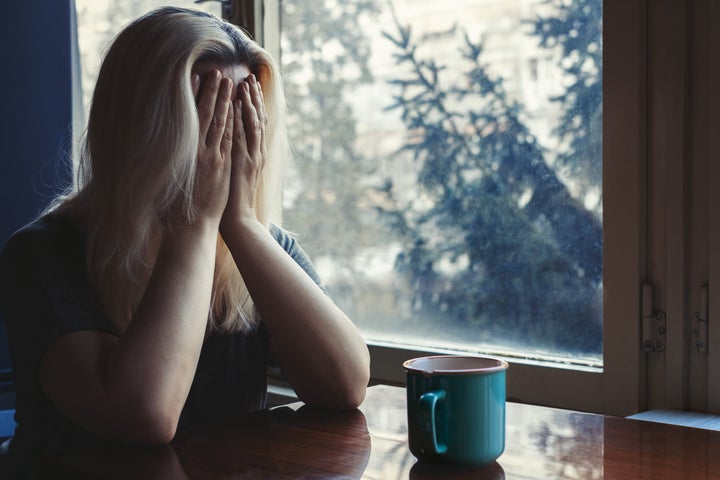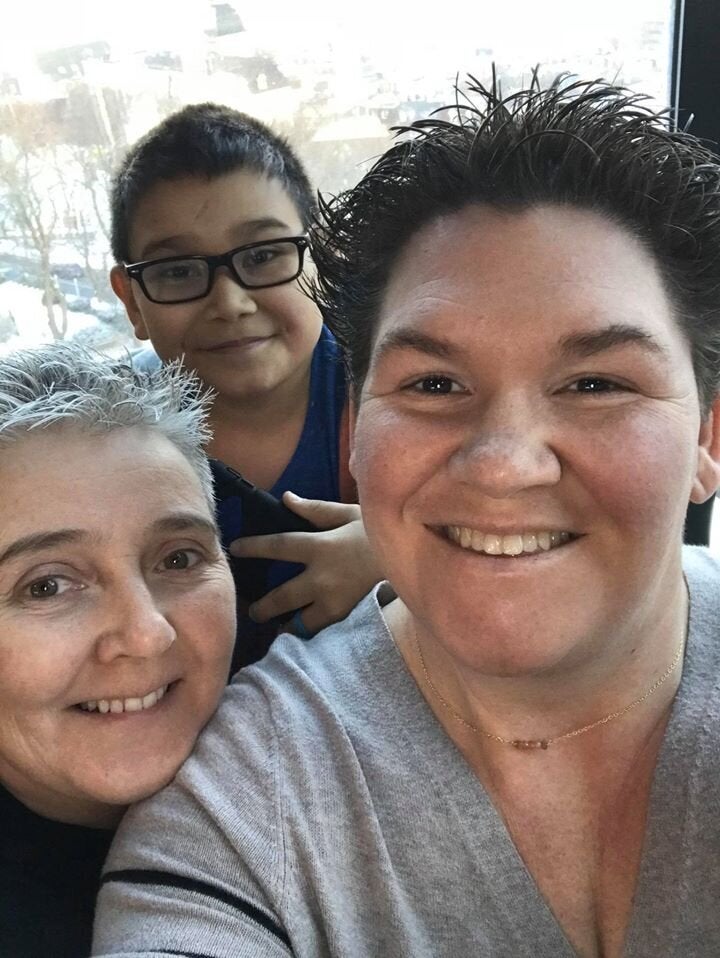We can all agree that almost nobody is OK right now, and that’s perfectly fine. Dealing with the COVID-19 pandemic is stressful enough, but keeping it together while taking care of kids full-time adds another level of overwhelming.
So, if you’re a parent or caregiver who’s trying to stay strong for the children in your life: You have our permission to cry your goddamn heart out.

Don’t think it can help? Just take it from Shannon Parsons. The mother of two from Napanee, Ont. was having lunch with her wife while watching Prime Minister Justin Trudeau’s national address last Wednesday when the sudden urge to sob overcame her. There wasn’t one reason why she wept.
“The weight of everything just hit me,” she told HuffPost Canada.
You probably aren’t hurting for reasons to wallow in some sadness. But if you’re on the fence about letting the tears roll or worry what will happen if your kids catch you visibly upset, here’s why you should consider having an ugly-cry session like Parsons:
Crying is good for your brain
If you feel better after a good cry, science can explain why. Letting the waterworks flow can lower stress caused by high cortisol levels, and help your body relax, thanks to its connection to the parasympathetic nervous system, according to Psychology Canada.
Research suggests you’ll reap more afterglow benefits if it’s been a long time since you last cried. A study published in the Journal of Research in Personality found that participants were more likely to say crying made them feel better if they had a dry spell.
Parenting guilt is too real
It doesn’t help that picture-perfect parenting expectations are still out in full-force. Cutesy baking moments with kids, window decorating sessions, tidy homes, and color-coded schedules can still dominate social media feeds and make it seem like other families are taking the quarantine in stride.

The self-isolation family humor made Parsons chuckle at first, but getting bombarded with A+ parenting examples made her feel inadequate.
“My parenting skills feel devalued. We’re not doing this, we’re not doing that,” she said. “The pretty color-coded schedule would blow up in my face.”
A cry can help express the frustration in not being able to live up to the impossible standards, while also coming to terms with the fact that people only post their best moments on social media.
It’s OK to grieve what’s been lost
Kids are losing out a lot of childhood milestones right now. Playing with friends and bonding with classmates can only be done virtually right now. Josh Gad, the voice of Olaf from “Frozen,” couldn’t help but tear up when he imagined himself in his daughter’s shoes.
“I hate seeing our kids deprived of their normal lifestyles and not being able to understand why all of this is happening so quickly,” he said in a candid Instagram video.
Watch: Josh Gad says “it’s OK to cry” to parents. Story continues below.
Tough to keep up with kids, let alone enrich their quarantine
Kids aren’t always angels. Piling on the anxiety of being quarantine can make everyone’s emotions run high.
Overwhelmed parents who need to let their feelings flow find themselves looking for hiding spots in order to have their crying sessions.
While it’s OK to seek privacy to express intense pain and stress, it might not hurt to let your kids see you entertain a small sniffle during quarantine.
When parents cry, kids learn it’s OK to be sad sometimes
Parsons strongly advocates crying in front of kids because it models how normal the action is.
“If I’m going to hide all my emotions, they’re going to think they can’t have emotions,” she said.
In previous cases, her 13-year-old son would panic if he saw her hunched over and crying.
But that subsided when she demonstrated how stress-crying only lasted for several minutes and wasn’t a world-ending experience.
“Today felt really hard and I need to cry. I needed to cry because if I didn’t, I couldn’t do all the other things on my plate,” she told him.

Family therapist Susan Stiffelman told Parenting that in order for kids to grow up into emotionally intelligent adults, they need to see the full-spectrum of emotion expressed in a healthy way by their adults.
However, context is important. According to The Conversation, parents need to find the middle ground between suppressing all their emotions and unleashing “uncontained” pain. A screaming fit and banshee wails will be stressful to witness, but a crying session that they know will end soon teaches them how unobstructive showing sadness can be.
Other parents will appreciate your realness
The cathartic effect of crying can soothe more than one person. Breaking through the social media barrage of perfect parenting can be refreshing for other parents who may not have given themselves permission to feel vulnerable.
That’s why Parsons decided to share all the reasons she cried on Facebook.
“We don’t have to be OK in any of this. We aren’t built to live this way and I pray that as we come out the other side, we give some deep thought to how we show up in the world,” she wrote.
Soon, she was inundated with replies from others in the same boat. One told her, “I’m putting on this smile and we’re cooking pancakes, but really I just want to go to bed.”
Even if other parents don’t reach out, Parsons knows that solidarity can help parents who feel burdened by invisible struggles feel seen.
“When I do that, people reach out and say … ’I couldn’t step out or seek support, but you made me feel safe and heard,” she said.
A HuffPost Guide To Coronavirus
Credit: Source link